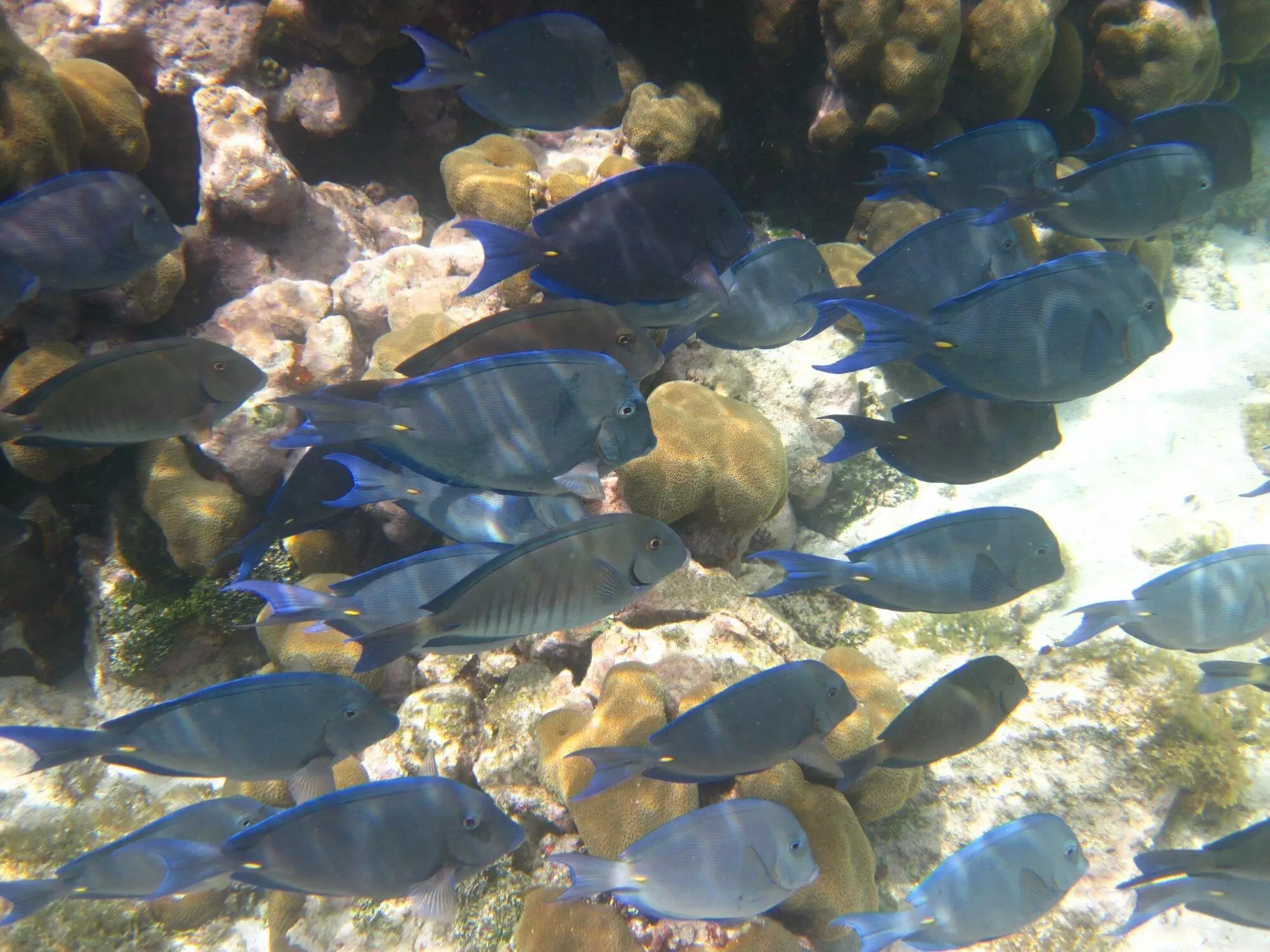
Extraordinary aptitude for mimicry. Often remains motionless. Neurotoxic venom in the spines of its dorsal fin. The West Indians call it “Poisson 24h” for the estimated duration of the venom’s action.
An invasive species native to the Indo-Pacific region, introduced to Florida in the 1990s (following the destruction of an aquarium during a hurricane) and present in Martinique since 2011.
The lionfish can rapidly and alarmingly reduce local reef fish populations, as it reproduces very quickly (up to 30,000 eggs every 4 days, all year round), has few predators and is very voracious.
Fishing and hunting are the best ways to combat the lionfish invasion.
In Creole, a “4-eyed” fish because it has a false black eye circled in white on each side of its body. It is a “decoy” to fool predators. Often found in pairs in the shallow waters of coral reefs.
It has no opercula and its gill opening is reduced to a single orifice. To improve water circulation in the gills, it makes uninterrupted mouth movements. During the day, it takes refuge in reef cavities and comes out to hunt at night. It doesn’t like to be disturbed: don’t put your hands in the reef holes.
Its beak is used to crunch the coral to extract the vegetal part and reject the calcareous part in the form of fine white sand. When he’s eating, you can hear him crunching the coral.
Its color varies according to age and sex. Most parrot species are hermaphroditic, starting out as females and transforming into males as they grow older.
These multicolored fish, caught by traditional methods, are a common sight on the market stalls of Martinique. One of the fishing methods used is a bottom-set gillnet.
Also known as the “soldier fish”, it erects its dorsal fin spines to impress.
It lives in dark reef cavities. This is why it has very large eyes, to better capture the light.
Local fishermen catch coral fish using creels: these structures are made of wood or iron and are immersed at depths of between 10 and 100m for 4 to 7 days, depending on the species targeted. Inside, bait (coconut, breadfruit, fish remains) attracts the fish, which enter through a funnel-shaped opening and remain trapped.
It gets its name from the two erectile spines on either side of its tail fin. They are as sharp as a surgeon’s scalpel, enabling it to defend itself with sudden tail movements.
Its coloration changes with age; juveniles are yellow.
Encounters with barracudas can be impressive because of their size, stare and sharp teeth. Rest assured, they almost never attack. However, avoid wearing silver jewelry.
Barracudas can be caught inshore with trolling lines. However, local fishermen prefer “Miquelon fishing”, i.e. offshore where pelagic species such as dolphinfish are found.
In West Indian cuisine, it is highly prized for its tender, flavorful flesh. It can be prepared in a variety of ways: in salads, sauces, stuffed or grilled.
It is very interesting to contemplate as it swims slowly and does half-turns on the spot. Avoid touching them with your flippers.
In Martinique, it’s often called the “Demoiselle Bijou” because juveniles have a body dotted with sparkling blue dots.
The female lays and fixes her eggs on rocks, while the male guards them fiercely. To protect his eggs, he’s not afraid to “charge” to impress predators, and even divers.
Chat with us directly from WhatsApp